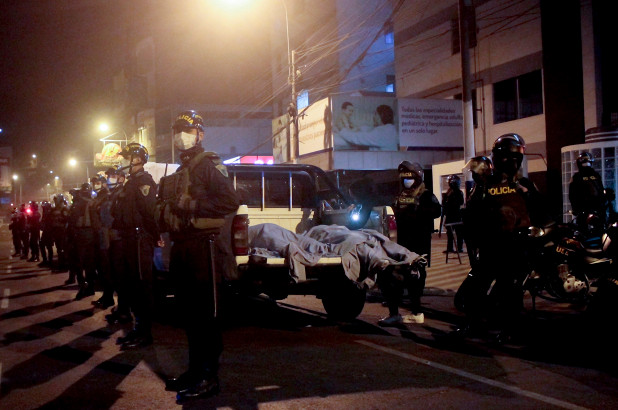Cybercrime is defined as an unlawful action against any person using a computer, its systems, and its online or offline applications. It occurs when information technology is used to commit or cover an offense. However, the act is only considered Cybercrime if it is intentional and not accidental.
A thorough and strongly enforced legal framework is critical for combating cybercrime. Given the transnational nature of these crimes, however, national laws that fail to consider international standards tend to prove myopic and thoroughly inadequate. Moreover, the reality is that many legal systems have not yet developed a modern approach for dealing with cybercrime.
The Convention on Cybercrime is, to date, the most comprehensive and effective global treaty on cybercrime. Working with treaty members to harmonize laws—that is, promulgating similar though not necessarily identical laws—is necessary in order to remove Ghana from the potential or actual group of criminal safe havens and facilitate global evidence collection efforts.
In a bid to efficiently combat cybercrime, Ghana ought to establish a central agency devoted to researching, articulating and coordinating cyber security policies. The new agency should develop a framework for implementing internationally recognized cyber security standards, conduct frequent benchmarking of the development of cyber security measures and consider establishing an accreditation process for certifying the preparedness of public and private organizations. Furthermore, there should be more efforts to coordinate and share cyber security assets between government agencies.
Work with regional and international actors, including the US Department of State and Department of Justice, and the New Partnership for African Development, in capacity building to allow Ghana to bolster its cyber security capabilities. These institutions have been specifically tasked with helping countries close capacity gaps and meet international standards.29 While the Ghanaian Police Service has been working closely with domestic consultants to improve its infrastructure, more can be done by the Ghanaian government with international collaboration to minimize vulnerabilities.
Create best practice guidelines in cooperation with the private sector to help the Ghanaian industry deal with future criminal activities. This should include a streamlined, fully confidential pipeline of communication between government and business that allows the latter to report suspected criminal attacks without compromising the corporation’s reputation, media image or financial interests.
The priority should be on complete discretion and minimizing disruptions so that private actors do not have a strong disincentive to report potential cyber-attacks. The Ghanaian government can look to similar guidelines published by foreign law enforcement agencies, such as the US Department of Justice.
Ghana has one of the highest rates of cybercrime in the world, ranking 7th in a 2008 Internet Crime Survey. The most popular form of cybercrime in Ghana is cyber fraud which is typically achieved via credit card fraud. However, recent decreases in universal credit card usage have seen the expansion of other cybercrimes such as blackmail and hacking.
Cybercrime Attack Types
Cybercrime can occur in various ways. Some common cybercrime attack modes include Hacking: It is an act of gaining unauthorized access to a computer system or network.
Denial Of Service Attack: In this cyber attack, the cyber-criminal uses the bandwidth of the victim’s network or fills their e-mail box with spammy mail. Here, the intention is to disrupt their regular services.
Software Piracy: Theft of software by illegally copying genuine programs or counterfeiting. It also includes the distribution of products intended to pass for the original.
Phishing: Phishing is a technique of extracting confidential information from the bank/financial institutional account holders by illegal ways.
Spoofing: It is an act of getting one computer system or a network to pretend to have the identity of another computer. It is mostly used to get access to exclusive privileges enjoyed by that network or computer.
Cyber Crime Tools
There are many types of Digital forensic tools; these include:
Kali Linux: Kali Linux is an open-source software that is maintained and funded by Offensive Security. It is a specially designed program for digital forensics and penetration testing.
Ophcrack: This tool is mainly used for cracking the hashes, which are generated by the same files as Windows. It offers a secure GUI system and allows you to run on multiple platforms.
EnCase: This software allows an investigator to image and examine data from hard disks and removable disks.
SafeBack is mainly using for imaging the hard disks of Intel-based computer systems and restoring these images to some other hard disks.
Data dumper: This is a command-line computer forensic tool. It is freely available for the UNIX Operating system, which can make exact copies of disks suitable for digital forensic analysis.
Md5sum: A tool to check helps you to check whether data is copied to another storage successfully or not.
Command line Tools
The most basic of all the command line tools would be PING. The PING program was written in 1983 by Mike Muuse, who at the time was working as an employee for the U.S. military. The author states that from his point of view, PING is not an acronym for Packet InterNet Grouper, but a reference to the sound a sonar makes as the ‘ping’ reflects and returns. The author wrote the program to help diagnose some odd network behavior he had encountered while troubleshooting a network.
















